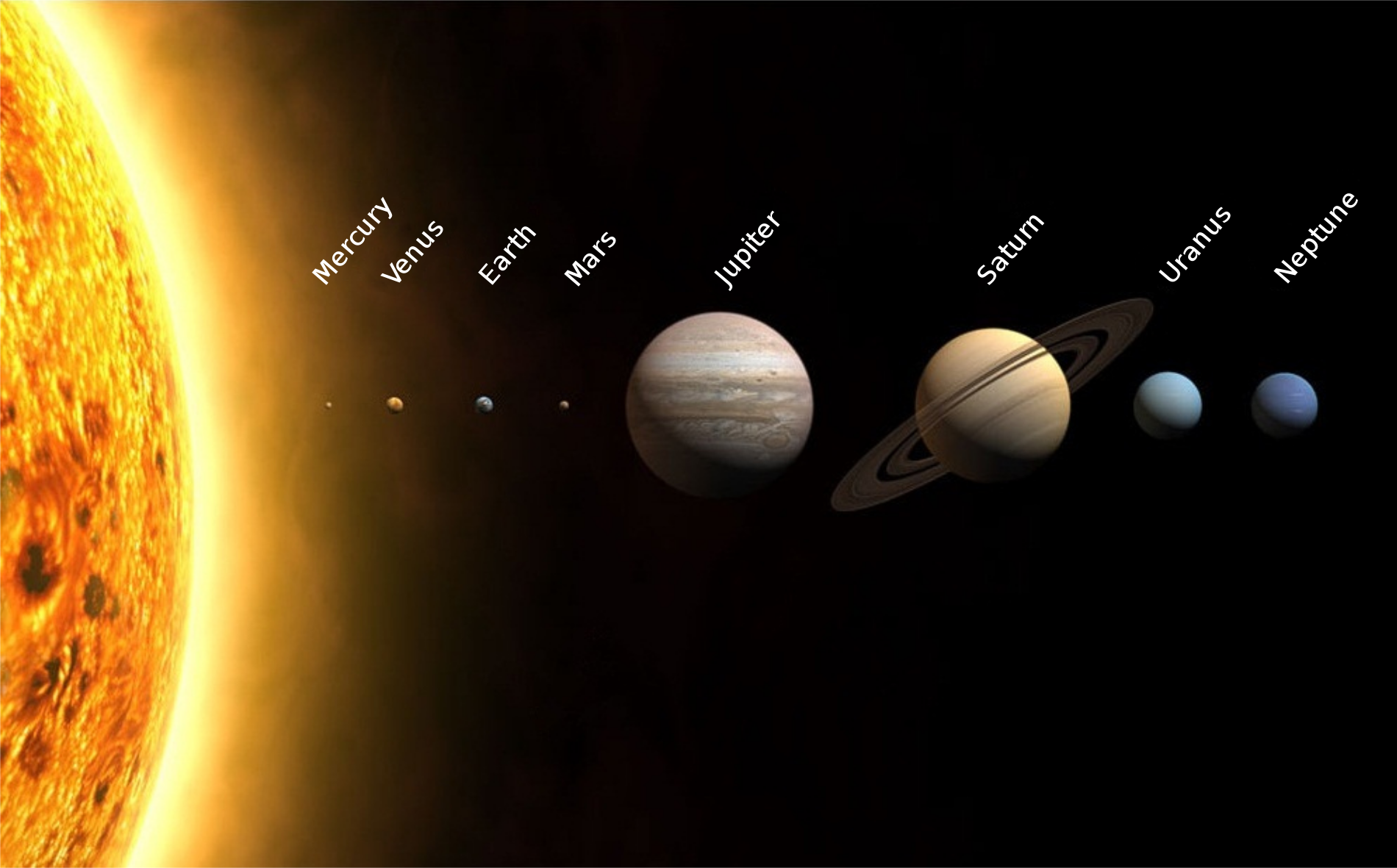Our solar system consists of the Sun, the eight planets, their moons, and their satellites. The eight planets are Mercury, Venus, Earth, Mars, Jupiter, Saturn, and Neptune in that order. The Sun is the center of the solar system and all of the planets in our solar system orbit the sun.
The planets orbit the Sun in close to circular orbits. The Sun accounts for 99.85% of the matter in the solar system. The planets account for 0.135% of the mass of the solar system.The rest of the solar system only accounts for 0.015% of the total mass of the solar system. Our solar system is in the Milky Way galaxy. The closest galaxy to the Milky Way is the Andromeda Galaxy at 2 million light years away. There are billions of other known galaxies in the the universe.
The four planet that are closest to the sun are called the terrestrial planets because of there somewhat rocky surfaces. The terrestrial planets include Mercury, Venus, Earth, and Mars. The four planets that orbit the sun beyond the orbit of Mars are called the gas giants because they are extremely large planets made up of mostly gas. These planets include Jupiter, Saturn, uranus, and Neptune.There are also millions of asteroids in our solar system. Most of these asteroids orbit the sun between the orbits of Mars and Jupiter. Comets are mostly found in the Oort cloud in the outer solar system. There are more than a trillion comets in our solar system even though we only know about 5,000 of them. Comets are made of ice and dust and leave a trail when close to the sun from the ice being melted.
There are about 140 satellites, or moons, that are in orbit around planets in our solar system. These satellites range in sizes from larger than Earth’s moon, to small pieces of debris. in addition to satellites some planets also have rings. These planets include Jupiter, Saturn, Uranus, and Neptune. Saturn’s ring is by far the largest of the ringed planets. The rings of these planets consist of particles that range in size from dust to boulders to house-sizes boulders. These particles can be rocky and/or icy. There are also magnetospheres that surround each planet.
The most prominent theory for how the universe was created is the big bang theory. The theory says that at the start of time all of the universe was compacted into a pebble that was a few millimeters wide. Then, there was a massive explosion known as the big bang that let all of the matter and energy in the universe to be released and start to expand. The instant after the all of the matter and energy was released, it expanded from its pebble size to an insane size in an almost impossibly short amount of time. After that, the universe continued to expand, but at a much slower rate for billions of years.
